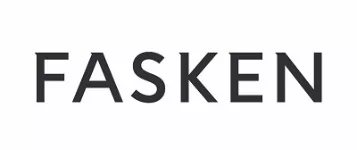- in United States
- within Law Department Performance topic(s)
- with Senior Company Executives, HR and Finance and Tax Executives
- with readers working within the Business & Consumer Services, Healthcare and Transport industries
Overview
On October 31, 2025, the Competition Bureau (the "Bureau") released its draft Anti-Competitive Conduct and Agreements Enforcement Guidelines (the "Guidelines") for public consultation. These Guidelines are lengthy and wide-ranging. They represent an evolution in the Bureau's approach to enforcing provisions of the Competition Act (the "Act") related to anti-competitive conduct and agreements, specifically sections 75 to 79 and 90.1 (collectively, the "ACCA provisions"). The Guidelines address significant amendments made to the Competition Act between 2022 and 2024 and also consolidate and replace several prior enforcement documents, namely the existing Abuse of Dominance Enforcement Guidelines, parts of the Competitor Collaboration Guidelines relating to civil conduct, and Price Maintenance Enforcement Guidelines. The Bureau is requesting feedback on the Guidelines on or before January 29, 2026.
Set out below are salient takeaways arising from the Guidelines. While the Guidelines are still in draft form and subject to change, companies should update their current compliance policies to reflect the recent amendments to the Act and the Bureau's current enforcement approach.
Salient Takeaways
Conduct First Approach
Departing from the provision-specific structure of previous guidance, the Guidelines adopt a conduct-first approach and add an enhanced digital framework. Rather than beginning with a statutory provision, the Guidelines indicate that the Bureau will first assess the nature of the conduct or agreement and its potential impact on competition before determining which provision of the Act applies. This reflects the Bureau's view that many forms of conduct may engage multiple provisions of the Act. A shift away from explicit safe harbours to a principle-based approach would appear to increase the Bureau's enforcement power and create significant uncertainty for business. It is also clear that abuse of dominance will be the primary provision the Bureau will use to address unilateral conduct.
Market Share/Market Power
The Guidelines confirm that, in the absence of other factors, the market share threshold for establishing market power in abuse of dominance cases remains 50% for single-firm dominance and 65% for joint dominance. The market share threshold for assessing market power is otherwise reduced to 30%, a departure from the 35% threshold in the previous guidelines.
Focus on Technology
A considerable portion of the Guidelines is focused on technology and digital ecosystems. For example:
- When defining markets, the Guidelines consider factors such as product interoperability, technological links and complementarity, network effects across products, and customer switching costs, among other considerations.
- The Guidelines identify access to data as a barrier to entry and expansion, noting that access to data (including information on how customers use products or other details about customers) is important for effective competition in certain industries.
- The Guidelines identify as a potential form of anti-competitive conduct or agreement the design of products and services that are not technologically compatible with those offered by other suppliers.
- The Guidelines discuss self-preferencing in digital markets, including assessing the ability to "multi-home."
New Business Practices
The Guidelines also explicitly mention new business practices that could raise concerns with the Bureau. This includes contracts that reference rivals (such as MFN clauses) and self-preferencing, which, according to the Bureau, occur when a firm gives favourable treatment to its own products, or other products that advantage it in some way. The Guidelines also discuss serial or "creeping" acquisitions, where individual transactions may not independently meet the thresholds for intervention under the Act's merger provisions but, when considered collectively, could, in the Bureau's view, have an anti-competitive effect.
Abuse of Dominance (section 78-79)
The discussion of abuse of dominance in the Guidelines is long-awaited, given that these provisions were amended three times during the most recent reforms of the Competition Act. The new abuse of dominance provision requires a party to show that a "dominant" entity has engaged in either a practice of anti-competitive acts or conduct, other than superior competitive performance, that has had, is having or is likely to have the effect of preventing or lessening competition substantially in a relevant market. This is in contrast to the prior version of the provision, which required demonstrating both anti-competitive intent and effects. However, both anti-competitive intent and effects must be demonstrated for monetary relief to be awarded. Key points from the Guidelines include the following:
- Although a remedy may be sought for conduct that does not substantially lessen or prevent competition, the Guidelines indicate that harm to competition, especially conduct with a lasting impact on a market, will weigh heavily in the Bureau's analysis and enforcement discretion.
- The Bureau did not depart from its prior approach to dominance, noting that dominance most likely arises from 50% market share (for a single firm) and 65% market share (for joint dominance).
- The amendments provide that it is not an abuse of dominance for a firm to become or remain dominant simply through superior competitive performance. Although the discussion of superior competitive performance is limited, the Guidelines state that the cause of any anti-competitive effect must not be superior competitive performance, whether because the conduct itself reflects superior performance or because other superior performance is the true cause of the effect.
- The Guidelines expand on types of anti-competitive acts for abuse of dominance, including self-preferencing, input pre-emption, contracts that reference rivals, below-cost pricing, margin squeezing, information sharing, and excessive and unfair pricing. With respect to excessive and unfair pricing, the Bureau makes clear that it is focused on harm to the competitive process, which is only likely if the pricing is used to engage in some other form of anti-competitive conduct. This is expected to mitigate the breadth of this provision.
Civil Competitor Collaborations (90.1)
- Section 90.1 applies to agreements that substantially prevent or lessen competition, including those between competitors and, in some cases, between non-competitors where a significant purpose of the agreement is to restrict competition. An agreement for this purpose includes both formal contracts and informal or tacit arrangements, although mere conscious parallelism is not sufficient. The effects analysis under section 90.1 focuses on whether the agreement makes a market substantially less competitive by allowing the parties to exercise materially greater market power than they otherwise could. This includes assessing whether the agreement leads to higher prices, reduced output, less innovation, or lower quality.
- With the removal of the efficiencies defence from section 90.1, efficiencies are now considered within the overall competitive effects analysis. The Bureau assesses whether efficiencies generated by the agreement are so significant that they improve or preserve the state of competition compared with the situation without the agreement. In other words, efficiencies only matter where they transform an agreement's net effect from being anti-competitive to neutral or pro-competitive.
- Of note in the Guidelines is the apparent introduction of a rebuttable presumption when the Bureau reviews agreements that do not involve competitors. The Bureau notes that it will focus on whether the agreement has the effect of harming competition. If an agreement has the effect of substantially harming competition, the Bureau may presume that it has a significant purpose to prevent or lessen competition in a market, in the absence of credible evidence to the contrary.
Price Maintenance (section 76)
Resale price maintenance occurs when a supplier of a product or service causes downstream retailers or distributors to resell at higher prices, for example through minimum resale price policies or minimum advertised pricing, or when the supplier refuses to supply certain retailers because of their low pricing policies. The resale price maintenance provision was not amended during the recent round of changes to the Competition Act. However, the Guidelines outline circumstances where price maintenance policies can harm the competitive process, including:
- facilitating coordination between suppliers, such as making it easier for a supplier to detect if another supplier is deviating from a coordinated outcome or making a coordinated outcome more stable due to higher profits;
- reducing incentives to carry the products of other suppliers and excluding rival suppliers;
- reducing price competition amongst the retailers of a product;
- facilitating coordination among retailers, such as a supplier setting a maximum retail price above the current price level, which may provide a "focal point" that improves coordination among retailers; and
- excluding discount or more efficient retailers.
The Guidelines also note special considerations that may apply to Minimum Advertised Price ("MAP") policies. The Guidelines note that MAP policies can harm competition even if they allow retailers to sell the product at a lower price than advertised because they can, in the Bureau's view, still make it harder for customers to learn about the prices available in the market. The Guidelines further note that MAP policies can also facilitate coordination amongst suppliers.
The content of this article is intended to provide a general guide to the subject matter. Specialist advice should be sought about your specific circumstances.







